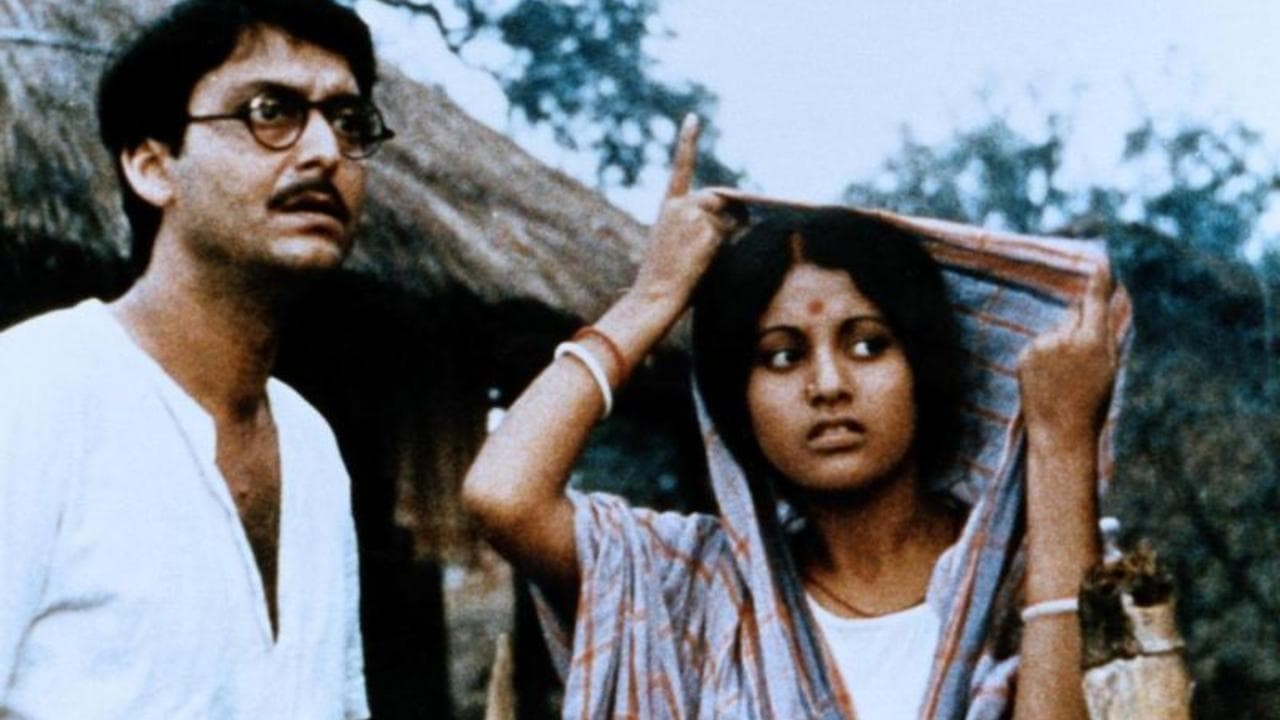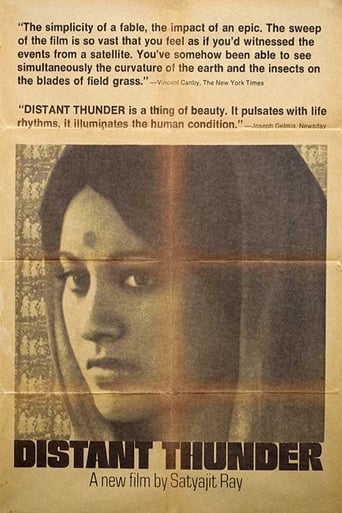

I'm a big fan of the director Satyajit Ray, who lived up to Renoir's humanist goal of making movies in which "everyone has their reasons." This movie is superb, detailing the dynamics of the war-caused Bengali famine of 1943 through the eyes of villagers, and then forcing the viewer to attempt to multiply the suffering depicted millions of times over in our boggled minds through the cinematic tour de force of a sledgehammer ending. It's marred by an able-ist depiction of one character with a scarred face, which is especially too bad because the scenes in which he appears are the ones in which Ray cinematically draws the connections between male violence in the form of rape and male violence in the form of war planes overhead. I know my review might drive people away from watching a film with this subject matter, and it is wrenching, but the relationships and characters portrayed are believable and even, at times, loving, and the movie is unforgettable and well worth watching.
... View MoreDISTANT THUNDER is a very hard to find film (at least it was for me), so, if you see at your local library or film rental, don't pass up the chance to see it. It tells the story of the famine of 1943, in India, where a young Brahmin doctor (Soumitra Chatterji) and his beautiful wife (Babita) must search for rice, as the price continues to climb. The doctor is humbled by the experience and is forever changed (for the better) through experiencing, firsthand, what it feels like to be hungry. This is a beautiful masterpiece by the incomparable Satyajit Ray. If you haven't seen his films already, this is a great introduction. I also highly recommend THE APU TRILOGY, TWO DAUGHTERS, DEVI and THE STRANGER.
... View More"Ashani Sanket", or "Distant Thunder", is one of the first color films of Satyajit Ray (probably my favorite film maker). It is a story about a young Brahmin couple, Gangacharan Chakravarti (played by Soumitra Chatterjee) and his wife Ananga (played by the simply named Babita), who come to settle in a rural and largely illiterate peasant community in India's eastern province of Bengal. Gangacharan takes up teaching and the occasional priestly duties, disparaging the backwardness of the people he is serving.There are several scenes of military aircraft flying in formation; the villagers wonder how they can fly and remark at their beauty. But the planes are flying because of their participation in WWII, and soon people start hearing that their (British) king is at war, and food shortages are causing their rice prices to increase from 6 (presumably rupees per kilogram?) to 8. The price skyrockets to 10, 11, 12, ... and gets to over 30.The historical background is a seemingly forgotten Holocaust, the Great Bengal famine of 1943. The British callously disregarded and even facilitated the starvation deaths of 3-5 million people in rural Bengal. While ironically India was very significantly supporting the British war effort with over 3 million troops (after again being denied independence after its WWI support), Winston Churchill exported food from India that was desparately needed domestically, and even barred other countries who were ready to send aid to India from doing so. This after a series of famines under the British Raj, such as one in 1770 that decimated 1/3 of Bengal's population - 10 million people - and that was compounded by the greed of the East India Company.As hunger affects all, including Ananga and Gangacharan, and some to the point of starvation, Gangacharan is shamed to realize that the relatively luxurious life they had led was at the expense of the landless peasants. "Ashani Sanket" is a portrayal of the horrors inflicted on rural Bengal by the wartime famine, and of Gangacharan's new questioning of caste restrictions and privileges, as well as the selfless sacrifices others less fortunate than he willingly make for him, as a hardly understood conflict goes on as distant thunder.I would recommend the film as a poignant but by no means maudlin historical drama. Technically, I think the film would have been more powerful in black and white - but that could just be because it is difficult to watch a Ray film and not compare it to his famous Apu trilogy or "Home and the World", with the stark reality of lower middle class life that the films' medium displays. I finished watching the film minutes ago on video and leave with the impression that it's by no means my favorite Ray film, but, like everything by him I've seen, worth seeing.--Dilip 10/28/2001
... View MoreThis film takes as its subject the Bengal famine of 1943 when, due to the negligence and indifference of the authorities, some 5 million lives were lost. The subject is certainly harrowing, but one does not come to a film like this for light entertainment.Ray focuses on a remote village, where the war is little understood, and is merely "distant thunder". The warplanes flying overhead are regarded uncomprehendingly, but with wonder. Soon, shortages of food start making themselves felt; the price of food rises above what may be afforded, and there is starvation.At the centre of this is a young Brahmin couple, who make use of their caste to earn a living. The horrific turn of events bring home to them the concept of social responsibility. When an untouchable girl dies at their door, they break the greatest caste taboo of all by deciding to dispose of the corpse themselves. In the context, this action is heroic; but this is heroism on the brink of extinction. The final unforgettable shot, where the sheer scale of the holocaust is brought home to us, sends a shiver down the spine even on repeated viewings.In dealing with this very difficult subject, Ray displays his usual all-embracing humanism, and a level of artisty that appears well beyond that of ordinary directors. This is not an easy film to watch, but is required viewing for anyone who values cinematic artistry, and by those who believe that horrors such as those depicted here should not be forgotten.
... View More